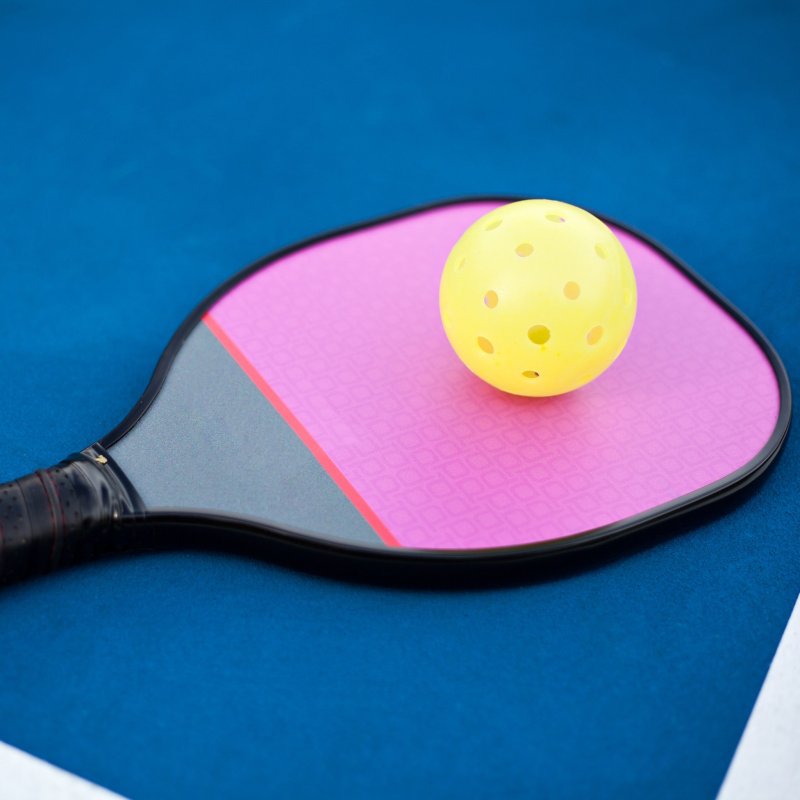
More and more of your friends are becoming devotees, new courts are springing up at local parks, and travelers are gearing their trips toward destinations where they can play. What’s it all about?
Videos by TravelAwaits
Pickleball — once termed “the fastest growing sport you’ve never heard of” — is not much of a secret anymore. If you’re like me, you have a growing number of friends who swear by the sport as a way to have fun and stay fit.
Known to be a social sport that allows for safe outdoor play between friends, new acquaintances, and even strangers, pickleball is having a moment right now. Here are seven important things to know about pickleball.
1. What Is Pickleball?
Part tennis, part badminton, part ping-pong, pickleball combines elements of other racquet sports, and tweaks them all.
For instance, while pickleball has a back-and-forth play that looks similar to tennis, its smaller courts are about the size of badminton courts, and its paddles are larger versions of those used in ping-pong.
Because pickleball uses a hard-plastic ball with holes (similar to a wiffleball), there is less bounce than a tennis ball — a factor that, along with pickleball’s smaller court, serves to reduce the amount of running and the overall intensity of play.
Those elements make pickleball more appealing to a range of ages and skill levels. Still, while pickleball was long seen as a sport for retirees, it has grown in appeal among younger players as well.
Peg Travers, USA Pickleball’s Assistant Southwest Regional Director, notes that she regularly sees multi-generational family groups playing at the pickleball complex in her community of Prescott, Arizona.
Fun Fact: Overall, USA Pickleball says the average age for all players is 41 years old.

2. How Pickleball Started
The origin of pickleball can be traced back to the mid-1960s, when three dads on Washington State’s Bainbridge Island were looking for a game to keep their kids active.
The group — including Joel Pritchard, a Congressman from Washington State, Bill Bell, and Barney McCallum — had access to an old badminton court, but no badminton gear, so they improvised and started playing with a wiffleball and ping-pong paddles. They soon lowered the badminton net to take advantage of the bounce of the wiffleball.
As the rules of pickleball progressed, the three dads are said to have kept in mind the original purpose: to provide a game that the whole family could play together. The sport took off, and by 1990, it was being played in all 50 states. Today, pickleball facilities are available in every state and all Canadian provinces.
And that quirky name pickleball? Stories differ, but the most popular one is that the game was named after the Pritchards’ family dog, Pickles.
3. Pickleball Rules
Players of other racquet sports will notice a number of similar rules in pickleball and some differences as well. Basically, pickleball can be played as doubles or singles, although doubles are most common, and a game is generally played to 11 points and must be won by 2. Points can only be scored by the serving team.
One major difference occurs in the serve, which in pickleball is done in an underhand arc. The rules on the USA Pickleball website state, “The server’s arm must be moving in an upward arc when the ball is struck.”
Another important rule: When the ball is served, the receiving team must let it bounce before returning, and then the serving team must let it bounce before returning — “thus two bounces,” says USA Pickleball. A complete listing of rules is available on the organization’s website.

4. Pickleball Paddles And Other Equipment
One of the beauties of pickleball is the simplicity of the equipment. A paddle, a ball, and court shoes are all that’s needed.
USA Pickleball says competitive paddles are made of a high-tech composite and range in cost from $50 to $150. Less expensive beginner paddles, as well as low-cost balls, are available at most sporting goods stores and via online retailers. For footwear, look for all-court tennis shoes that are designed for a variety of court types.
Editor’s Note: See our picks for the best pickleball equipment to play this newest craze here.
5. How To Get Started In Pickleball
As with any activity, new players should begin slowly and work up to more active play. Travers suggests taking a lesson for beginners through a local pickleball club.
USA Pickleball offers a number of tips for starting out on its How to Play Pickleball page.

6. Pickleball Tournaments
Big national tournaments attract top pickleball players to travel spots in Florida, California, and Hawaii, and around the world. Other smaller regional tournaments are available as well. A list of 2021 tournaments can be found on the Pickleball Tournament website.
Travers said pickleball players regularly travel to tournaments and pickleball events all over the U.S. and to many international destinations as well. She has traveled, along with her husband, to a weeklong pickleball event in Jamaica, and she plans to travel to Japan soon for another event.
Pickleball trips typically keep participants busy with clinics and fun play, along with tourism activities like biking and hiking.
7. Pickleball Travel
For pickleball players looking for trip inspiration, the Pickleball Trips website offers a range of travel options that are billed as a bridge to the world of international pickleball.
Pickleball also enters into travel decisions for people taking road trips through the U.S. Travers has friends who check out opportunities for pickleball play before heading to a new destination, and she often hears from visitors to Prescott, Arizona, who are looking for information on the local pickleball scene.
For those in need of information about pickleball courts nearby — wherever you are — the USA Pickleball’s Places 2 Play website has a search option.
Overall, Travers says pickleball and travel go well together, in part, because the paddles and balls are so easy to pack, and also because of the social nature of the game.
“Pickleball is such a friendly sport,” she said, noting that people often show up at a new court, look for people with similar skills, and simply ask to play. “You just paddle in,” she said.
